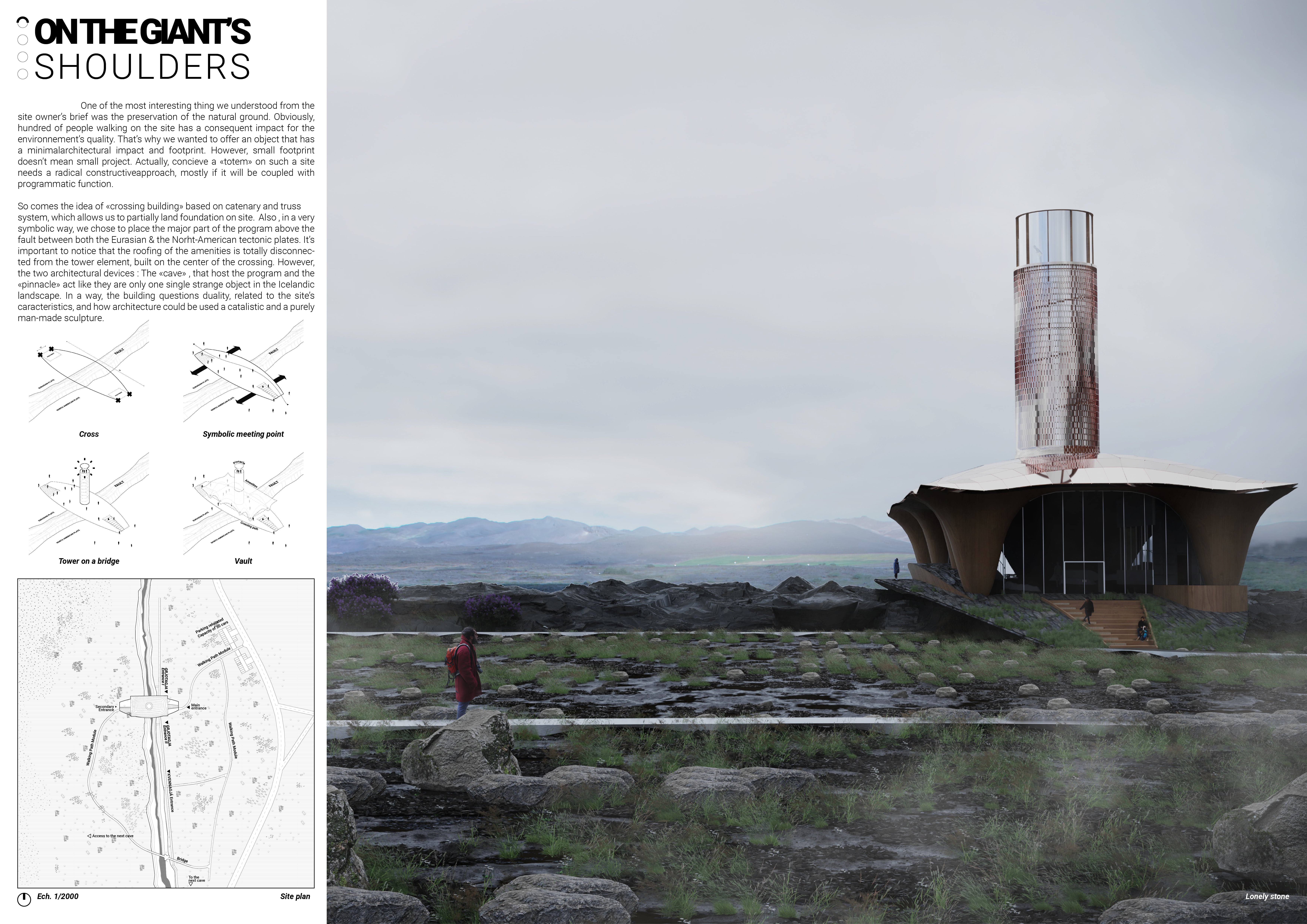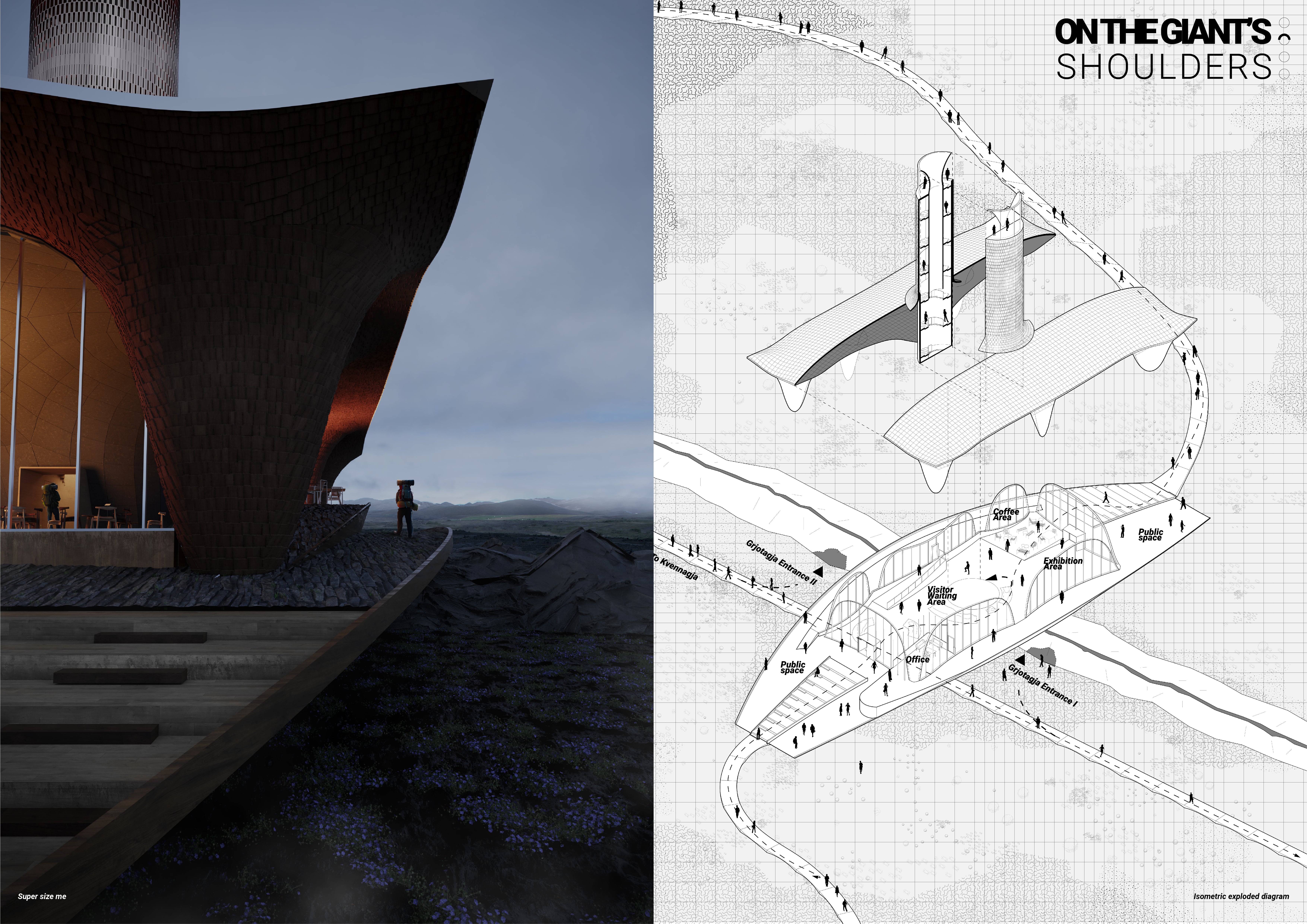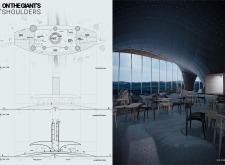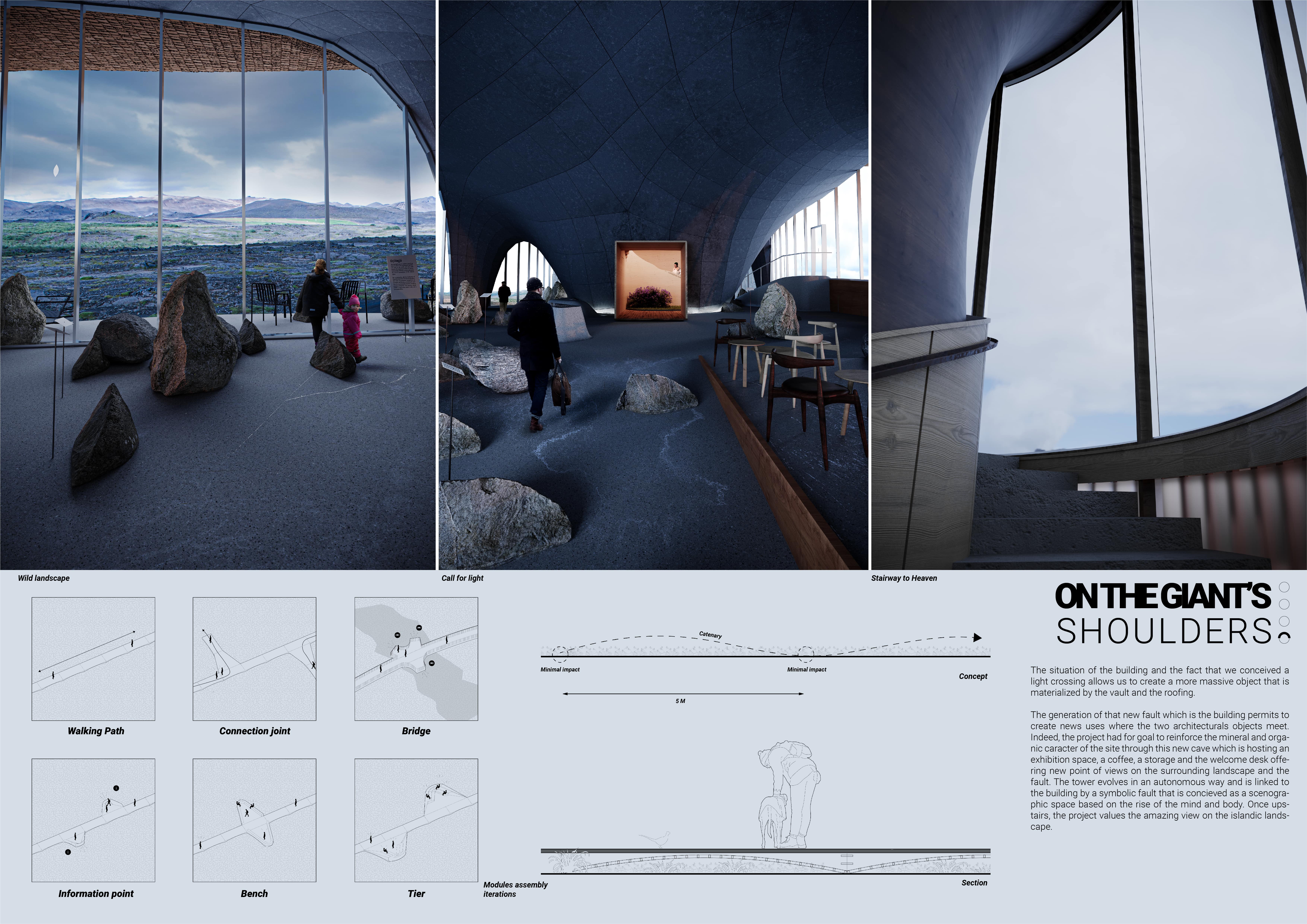5 key facts about this project
"On the Giant's Shoulders" is located in Iceland and showcases a thoughtful approach to integrating architecture with the natural landscape. The design aims to preserve the existing environment while providing spaces for the community to gather and explore. The concept centers on minimizing architectural impact, allowing the building to coexist harmoniously with its surroundings.
Structural Concept
The design features a “crossing building” framework that employs a catenary and truss system. This system allows for an innovative foundation that partially connects with the ground. As a result, the structure maintains a smaller footprint, which helps lessen its impact on the landscape. Importantly, most of the building's program is positioned above a significant geological fault, linking the architecture to the earth's natural features.
Architectural Elements
Two main components define the design: the “cave” and the “pinnacle.” The cave serves as the heart of the building, accommodating spaces such as an exhibition area, café, storage, and a welcome desk. In contrast, the pinnacle stands as a central tower, adding verticality and creating a visual focal point. Together, these architectural elements form a cohesive structure that balances functionality with an appreciation for the landscape.
Spatial Dynamics
The layout encourages visitors to move through various spaces while experiencing the surrounding environment. Strategic arrangements allow for different perspectives, inviting users to engage with both the architecture and the geological setting. This design choice enhances the overall experience, making the connection between people and nature a significant aspect of the visit.
Material Considerations
While specific materials are not extensively detailed, the presentation indicates that the roofing of the amenities is intentionally separate from the central tower. This design decision suggests a deliberate exploration of contrasts between the different elements of the structure. It aims to reinforce the relationship between the cave and pinnacle, enhancing the building's interaction with the site while aligning with the goal of minimizing environmental impact.
The building's height above the fault line allows for impressive views of the Icelandic landscape, offering visitors a chance to reflect on both the architecture and the natural surroundings. This relationship between the built form and the earth encapsulates the essence of the design.






















































